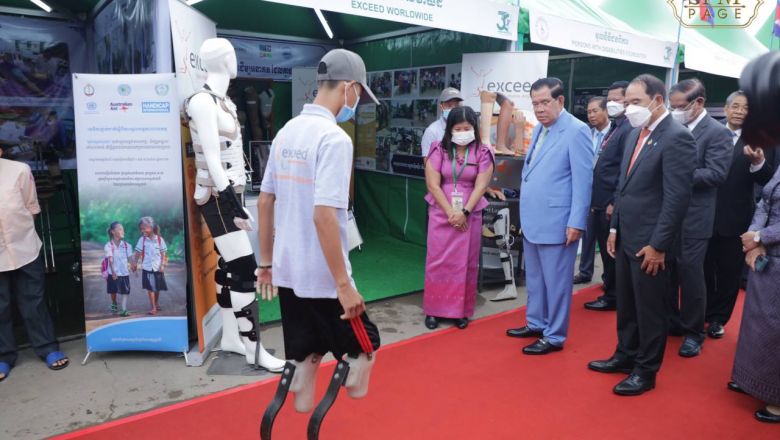Construction begins ‘soon’ on 1M sqm K Cham SEZ
Construction begins ‘soon’ on 1M sqm K Cham SEZ
An unnamed special economic zone (SEZ) is set to break ground on a one-million square metre plot in Kampong Cham province’s Cheung Prey district “soon”, according to provincial governor Un Chanda.
The governor revealed this to the media on January 9 on the sidelines of a groundbreaking ceremony for an expansion and revamp of a section of National Road 7 from the Skun roundabout in Cheung Prey to the Kizuna Bridge roundabout in Kampong Cham town.
With the tentative green light given by the Council for the Development of Cambodia (CDC) – the government’s highest decision-making body for large-scale investments – construction on the SEZ is set to begin shortly after a detailed study of development plans is completed, Chanda assured, disclosing that he recently met with the CDC on the particulars of the project.
He did not reveal how much money has been earmarked for the SEZ, or identify any financiers behind the project, beyond a mention of at least one “private sector” entity.
Nonetheless, he voiced optimism that the SEZ would generate jobs and bring in tenants who produce textile-related goods, thereby improving the financial wellbeing of locals as well as boosting the provincial and national economies.
Chanda committed the provincial authorities to streamlining the relevant procedures to ensure the success of this and similarly promising projects.
Royal Academy of Cambodia economics researcher Ky Sereyvath affirmed that the SEZ would be located in the Skun area, which he lauded as a strategic location for garment factories and other industrial businesses.
Of note, the area is affectionately called “Spiderville” for the fried spiders commonly sold as a snack near its main market.
Sereyvath speculated that existing manufacturing enterprises in the area would look to bring their operations into the SEZ, as “a single area where things are easier to manage, facilitating and reducing costs for factory owners”.
He also echoed Chanda’s remark that the project would provide new opportunities and encourage more investment in Kampong Cham’s manufacturing industry, especially the garment sector.
The provincial administration divides the Kampong Cham economy into three main sectors: agriculture, services and handicrafts, each respectively employing 66.2 per cent, 33.1 per cent and 0.70 per cent of the province’s workforce.
In 2019, the average per-capita income in Kampong Cham was $1,679, with the size of the provincial economy at about 7.617082 trillion riel, or $1.87150 billion – accounting for 7.1 per cent of the national figure of nearly 0.11 quadrillion riel – with services, agriculture and handicrafts representing 43 per cent, 38 per cent and 19 per cent, respectively.
In 2021, a total of 1,342 factories and handicraft enterprises were officially recorded in the province – 17 large-scale, 135 small- and medium-sized, and 1,194 handicraft businesses, suggesting some overlap.
Notable examples of such enterprises in Kampong Cham represented by each category include: large-scale – garment and rubber-processing factories; small- and medium-sized – rice mills and water-bottling plants; handicraft businesses – glass-cutting, iron-welding and most family-run operations.















